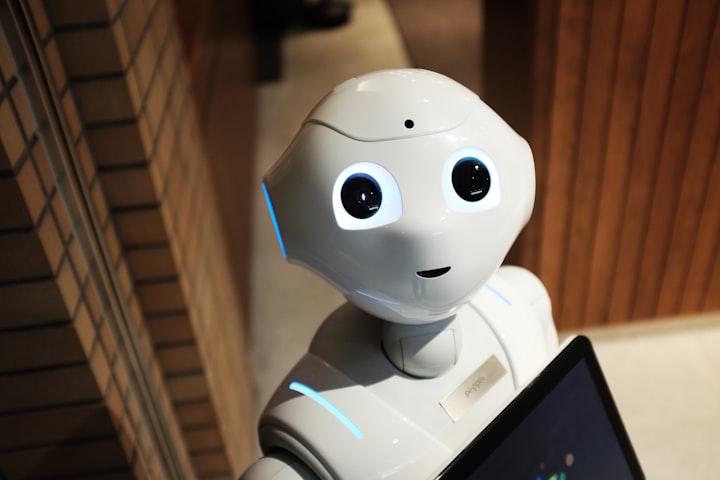
A starting point for understanding the coming robot apocalypse are the Terminator movies. I think most of the stories are about preparing for a robot uprising. Today, workers in dozens of professions facing the robotic apocalypse need do no more than battle cries and concerted action by business, education, government, and, of course, labor leaders.
In the Terminator movies, we understand that when Skynet, an artificial intelligence, becomes self-aware, it is only natural that it strives to enslave humanity. Robopocalypse, Steven Spielberg's best-selling novel and film adaptation, is set in the near future where robots are already in use. A rogue artificial intelligence called Archos, who has become self-aware, is developing a virus that infects robotic vehicles with the murderous intent of destroying and ruling humanity.
This may not seem much, but it will give you a whole new perspective on everything you've seen about robots in movies and series. This book will show you how and what you need to know to survive the robotic apocalypse.
The worry is that as AI becomes smarter, it will be able to improve its own software in hours, not minutes. It may be cleverer than man, but we don't know. For many, Isaac Asimov's futuristic stories about humans programming robots are like the three laws of robotics.
In utopian visions, technology emancipates human work from repetitive, banal tasks and frees us from being more productive and from taking on more fulfilling tasks. In dystopian visions, robots come for every job, putting tens of millions of people out of work and plunging the economy into chaos. These warnings were at the heart of Andrew Yang's ill-fated presidential campaign and helped advance his case for a universal basic income, which he said would be necessary if automation left too many workers behind.
As the country turns to online delivery, what looks like the food industry is becoming an inevitable route to work. It is wages that will fall if, of course, companies replace workers with robots.
That is not the case, and there is plenty of human activity in the history of technological innovation. The prevailing entrepreneurial motivation for introducing a new technology is to reduce the associated human labor costs. Robots - and, more broadly, software - will not leave their jobs to strike or need a bathroom break, let alone receive a paycheck and benefits.
Robots in the broadest sense of the word don't treat themselves to anything - at least not most of them. On the one hand, machine learning and the increasing interaction between programs and people have lost the human element.
It is a core set of robot films that human emotion is the penultimate human good. One of the advantages you have, whether you are a sole attorney or a small attorney, is the ability to contact your clients on a personal level. Providing this kind of personalized service is something robotic devices are not able to do.
As far as lawyers are concerned, for me as a lawyer it is not as if one day a suit wearer will sit at your desk and worry you. They let people go and destroy our habitat. If someone comes into the woods and causes trouble, they will have to deal with it.
In our first episode of Tech Noobs podcast, tech noobs Steve Francis, Jeff Behl and Noob Scott Barnett discuss how to survive the robotic apocalypse. Not a day goes by without some dire warning about how the future will work.
Others warn that income inequality will continue to rise, as capital owners benefit more from the benefits of innovation than those who work for a living. Some alarmists fear a robotic apocalypse, while others foresee a day when singularity will come, when artificial intelligence will surpass human intelligence.
According to a McKinsey analysis, global productivity could boost up to as much as 0.8% to 1.4% if people continue to work. The Obama White House estimated that 31 million people could lose their jobs to autonomous cars. A report by the Center for a New American Security, a nonpartisan think tank focused on national security, predicts that global military robotics spending could reach $75 billion by 2018 as the military deploys swarms of autonomous and semi-autonomous robots to overwhelm enemy forces with robots and humans.
Amazon has increased the number of robots working in its warehouses from 1,400 to 45,000 in the past three years. Optimists are picking up the trend: robots are helping Amazon keep prices down, which means people are buying more things, which means it needs more people to fill its warehouses, and it takes fewer human hours to pack everything. Bruce Welty, founder of a fulfillment company that sends more than $1 billion in e-commerce orders a year and a company called Locus Robotics that sells warehouse robots, said he thinks the threat to his company's jobs is exaggerated because e-commerce is creating more demand for warehouse workers.
I don't think it's a spoiler to say the machines are trying to take power, but in the Netflix series "Mitchell" they are. Their plan is to use small flying pods to remove annoying people and take them to one of seven huge 128-story rockets. But Mitchell is your normal family with everyday problems, and he is the last free man on earth, so he will be saved.
The robots want humans never to return, so they have to launch a rocket at a speed that matches the escape velocity. They will not use rockets or chemical fuel because it is too barbaric for humans. So they decide to put up a huge rocket on every continent.





Comments
There are no comments for this story
Be the first to respond and start the conversation.